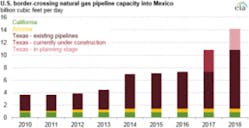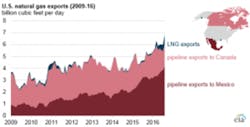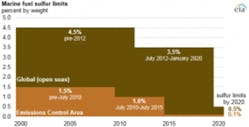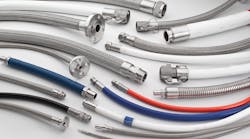Dakota Access oil pipeline will not go under reservoir
After months of protests, the Standing Rock Sioux Tribe won a victory in its battle to block the Dakota Access oil pipeline in southern North Dakota when the U.S. Army Corps of Engineers announced that it would not allow the pipeline to be drilled under Lake Oahe, a Missouri River reservoir. The Army said it would instead conduct an environment study to look for alternative routes for the four-state, $3.7 billion Dakota Access pipeline.
The Standing Rock Sioux tribe and its supporters argued the pipeline would threaten the tribe’s water source and cultural sites. Construction is largely complete except for the stretch a half-mile from the reservation.
President-elect Donald Trump said last week that he is in favor of finishing the 1,170-mile pipeline. When his administration takes office next month, they could override the Army’s plans to consider other routes. Trump owns stock in Energy Transfer Partners, the company building the pipeline.
Graphic courtesy of the EIA
New US border-crossing pipelines bring shale gas to more regions in Mexico
U.S. pipeline capacity for natural gas exports to Mexico has rapidly expanded in the past few years and currently stands at 7.3 billion cubic feet per day (Bcf/d). This existing cross-border capacity primarily supplies the Northeast and Central regions of Mexico. New capacity projected to be completed in the next several years will help to supply Mexico’s Central and Northwestern regions.
The expansion of the U.S. cross-border pipeline network into Mexico has been driven primarily by strong growth in Mexico’s natural gas demand in the power sector, declining domestic production, and the lower prices of U.S. pipeline gas compared with more expensive liquefied natural gas imports.
New infrastructure aims to increase takeaway capacity of Utica region natural gas
Several pipeline projects that have been approved, or that are in various stages of the approval process, would increase capacity to transport natural gas from the Utica production region in Ohio to natural gas markets. Collectively, these projects could add up to 6.8 billion cubic feet per day (Bcf/d) of takeaway capacity out of the Utica region by the end of 2018.
Over the past several years, natural gas production in the Appalachian basin from the Marcellus and Utica shales has grown significantly. Because pipeline projects often have longer lead times than production projects, transport infrastructure for accessing natural gas demand centers and export locations in the Appalachian Basin has not kept pace with production capability. This situation has resulted in a lower price for natural gas from the Appalachian region relative to many other natural gas trading hubs in the U.S.
Graphic courtesy of the EIA
US natural gas exports to Mexico continue to grow
U.S. pipeline exports of natural gas continued to grow in 2016, and have doubled since 2009. Almost all the growth is attributable to increasing exports to Mexico, accounted for more than half of all U.S. natural gas exports since April 2015. In August, the U.S. exported 4.2 Bcf/d of natural gas to Mexico via pipelines. U.S. daily pipeline exports to Mexico through August 2016 are at a yearly average of 3.6 Bcf/d, 25 percent above the year-ago level and 85 percent above the five-year (2011 to 2015) average level.
Tighter marine fuel sulfur limits will spark changes by refiners
The sulfur content of transportation fuels has been declining for many years as a result of increasingly stringent regulations. In the U.S., federal and state regulations limit the amount of sulfur present in motor gasoline, diesel fuel, and heating oil, according to the EIA. New international regulations limiting sulfur in fuels for ocean-going vessels, set to take effect in 2020, have further implications for both refiners and vessel operators at a time of high uncertainty in future crude oil prices, which will be a major factor in their operational decisions.
Graphic courtesy of the EIA
The first challenge for refiners is to increase the supply of lower sulfur blendstocks to the bunker fuel market. Refiners have several potential paths. One approach is to divert more low-sulfur distillates into the bunker fuel market. Another option is to use low-sulfur intermediate refinery feedstocks in bunker blends.
A second challenge for refiners is deciding what to do with the high-sulfur residual oil that can no longer be blended into bunker fuel. Adding capacity to desulfurize residual oil is one option, but the economics to do so are not currently attractive to refiners. An alternative strategy is to build or expand refinery units that take heavy hydrocarbons and upgrade them into lighter, more valuable products. In either of these cases, refineries would be faced with investments and costs that are acceptable only if there is certainty of future demand from the shipping industry.
NNPC signs $50B MOU with Chinese companies for infrastructure development
The Nigerian National Petroleum Corporation (NNPC) signed a Memorandum of Understanding (MoU) worth $50 billion with some Chinese companies for infrastructure development in the oil and gas sector. The money will be spent on investments in oil and gas infrastructure, pipelines, refineries, power, facility refurbishments and upstream sector, NNPC said in a statement. Companies involved include NORINCO, CINDA, CNOOC, SINOPEC/ADDAX, ICC -NDRC, among others. ICC-NDRC would develop an overarching master plan for the Nigerian oil and gas sector.
Saudi Arabia counteracts oil debt by boosting mining industry
Saudi Arabia continued attempts to diversify its economy away from oil by investing $35 billion in a mining and minerals complex. The complex at Ras al-Khair Industrial City, inaugurated by King Salman this week, is part of economic reform plans announced earlier this year to almost quadruple the mining sector’s contribution to gross domestic product to 240 billion riyals ($64 billion) by 2030. The kingdom has ramped up its efforts to ease its reliance on oil exports after low crude prices pushed state finances deep into deficit.





